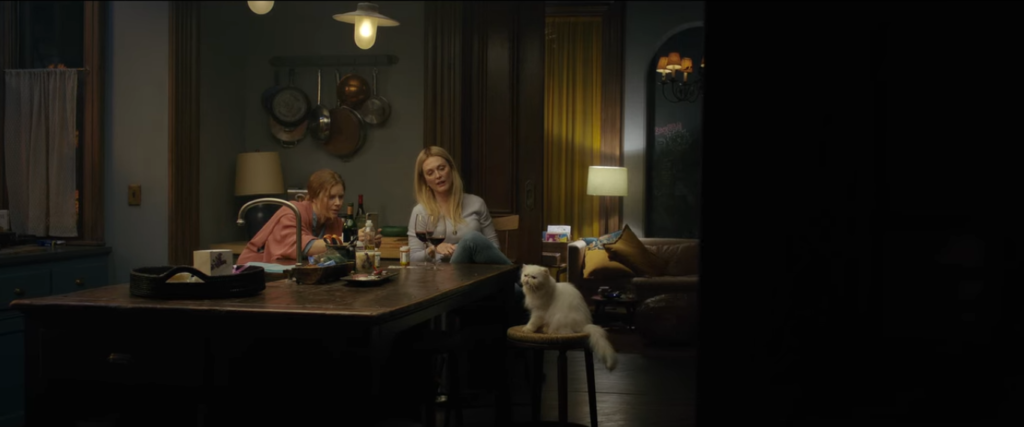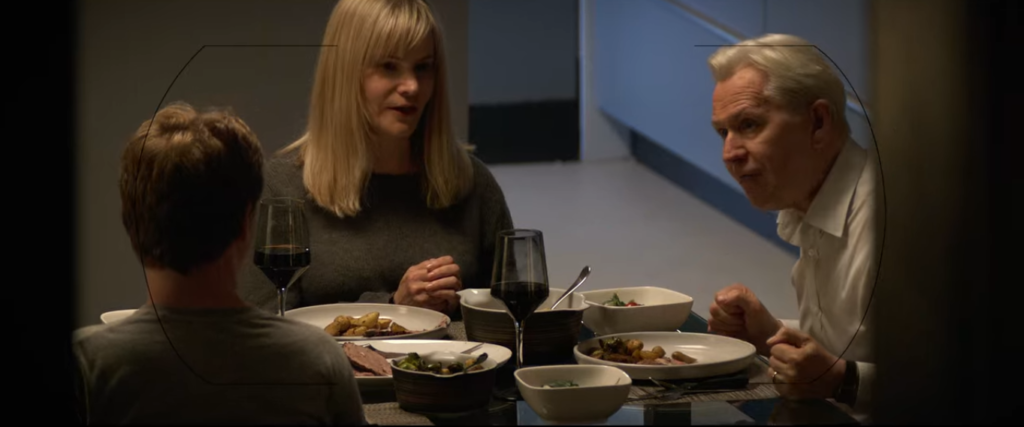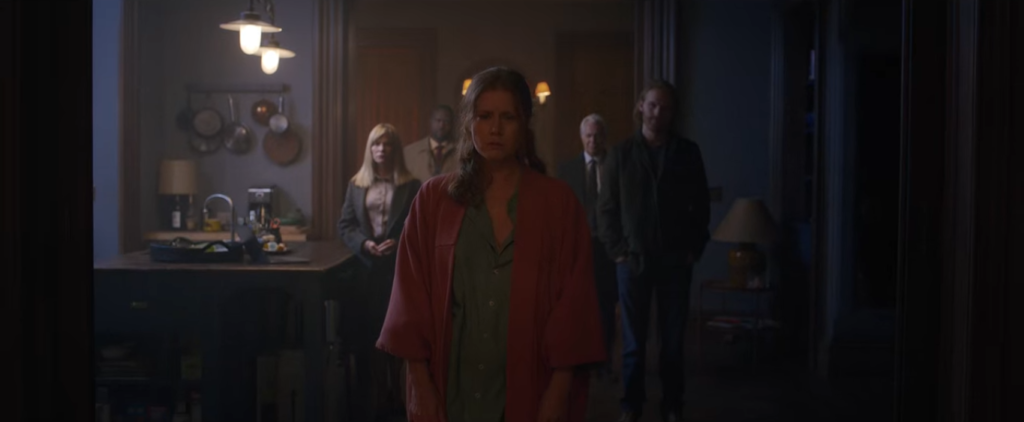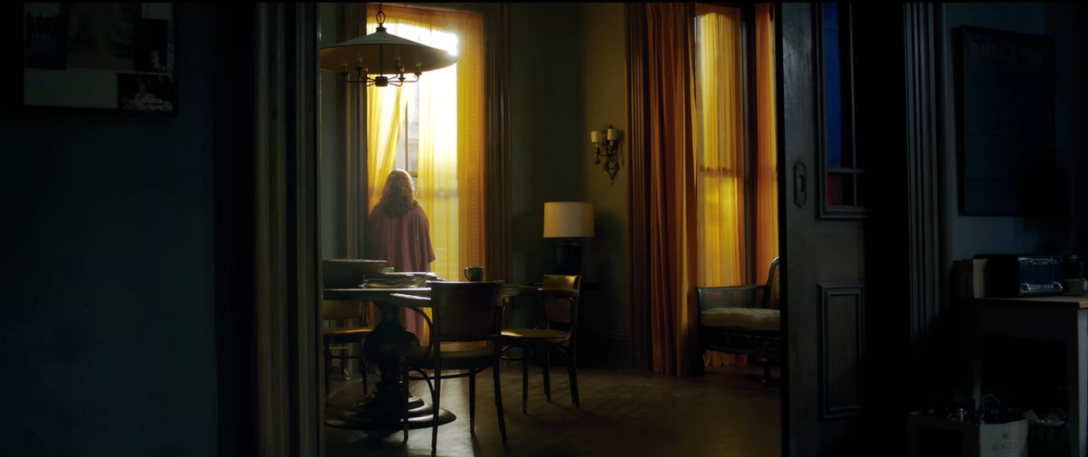I really wanted to like The Woman in the Window. I really did.
It’s got a great cast (Amy Adams, Gary Oldman, Julianne Moore… the list goes on!) and a great premise (someone trapped in their house witnesses something strange going on across the street).
Sure, I realised from nothing more than the Netflix description that this was essentially just Rear Window: 2021 Edition (or, even just a rip-off of Rear Window’s modern brother, Disturbia), but I was willing to put up with that. I like this kind of story enough to see it done multiple times over, and I figured anything helmed by Amy Adams is a pretty sure bet.
Unfortunately, I didn’t like The Woman in the Window nearly as much as I thought I would.
First of all, the story is just… not great. It starts off promising; we find out that Amy Adams’ character, former child psychologist Dr. Anna Fox, is bound to her house by crippling agoraphobia, and that the new neighbours, the Russells, seem a little off. Anna has a weird interaction with each of them in turn: the son, Ethan (Fred Hechinger), the mother, Jane (Julianne Moore) and the father, Alistair (Gary Oldman).
The plot quickly builds intrigue as it seems that the Jane Russell Anna met is perhaps not the real Jane Russell, and before Anna can figure out who the woman she met really is, this real/fake Jane Russell is swiftly dispatched with a knife through the abdomen.

The first half of The Woman in the Window does contain some genuinely tantalizing plot threads. There’s the aforementioned mystery of the Russells, but there’s also the mystery of why Anna is now agoraphobic, and also why her basement-dwelling tenant David (Wyatt Russell) is so damn weird (and also why, in a house that spans three whole floors, did she make him live in the basement).
Oh, what’s that? Anna’s house spans three whole floors? Yeah. That’s a thing. Look, I’m not saying that she couldn’t afford it – the film never mentions anything to do with her money, but she might be secretly rich. However, I did find it a bit excessive that Anna’s house is so gigantic and luxuriously appointed when we know that she lives there alone and she also no longer works. And, the house is also smack dab in the middle of New York City. Film logic, I suppose.
Anyway, Anna’s excessive house aside, the first part of the film not only interesting, it’s well-acted by its lead. Amy Adams always does a great job of whatever she’s in, and this is no exception. She is a woman who seems genuinely haunted by whatever has happened to her in her past, and every room that she enters seems to be filled with shadows.
Anna also seems to be in a state of arrested development – she wears the same clothes every day, she does the same things every day. Her sessions with her psychologist (Tracy Letts) are going nowhere. The days blend into one, Anna trapped both within the walls of her home and inside her memories of the past.

The only thing that breaks Anna from this monotonous existence is the mystery that begins to unfold with the Russells. Unfortunately, as this mystery unravels, so does the film.
As I was watching The Woman in the Window, I thought I had a pretty good idea of where the story was going to end up. I’ll share my original theory with you, just because it’s so different to what actually ends up happening that it’s not a spoiler in any way, really.
Alright, so, about three-quarters of the way through the film, Anna calls the police to inform them about all of the weird things that have been going in with the Russells and in her own house. So, the police show up and so do the Russells, who are pretty pissed off with Anna for constantly claiming that the now-different Jane Russell (this version played by Jennifer Jason Leigh) isn’t the real Jane Russell, and that the other Jane Russell was murdered. Yada-yada-yada.
It’s then revealed that the reason why Anna is agoraphobic is because she inadvertently killed her family in a car crash (alright, so maybe a little spoiler. Sorry). She then seems to suffer some sort of hallucination of them being in the car again, and it’s also revealed that her daily conversations with them aren’t real.
What I thought was then going to happen was that each of the other characters were going to be revealed to be hallucinations as well, with all of them having something to do with some aspect of Anna’s fractured psyche – for example, Ethan Russell, who Anna thinks is being abused by Alistair and who she tries to reach out to, representing her trying to save a child when she wasn’t able to save her own.
I had explanations for what each of the characters represented in relation to Anna, and it all seemed pretty fitting (I won’t bore you with all of the explanations now, though, because most of them are really big spoilers and make more sense if you’ve seen the film anyway).
However, despite this being a much more interesting ending (in my opinion at least), in the last act The Woman in the Window’s plot just goes wild. There’s a bonkers explanation for the Jane Russell mystery, and then it becomes a slasher flick.
However, the very worst part of the film is the very final scenes, in which it’s revealed that after surviving the ordeal that is the ending (and I mean ordeal as in the terrible writing, not the physical challenges of fighting off a serial killer), Anna is just magically cured of her mental illness. Yep, it’s that easy, folks!

As someone who has struggled with mental illness all of my life (hello anxiety, my old friend), I really, really hate stories where the character’s mental illness just evaporates as soon as the story needs a happy ending. While I’m not saying that people don’t recover from mental illness, and that it’s not a good thing to have a story where the character overcomes their problems and gets to be happy, sometimes it also seems like a bit of a slap in the face. Anna has absolutely crippling agoraphobia, but is able to be perfectly cured of it within less than a year? Sorry, but I’m just not buying it.
So, that’s the story of The Woman in the Window adequately pulled apart. Now let’s talk about how much this film wants to be a Hitchcock film, especially Rear Window (so much so that it even chucks the word “window” into its title).
The desire to replicate (or if not replicate, at least pay tribute to) Hitchcock is pervasive throughout the film, but a few key moments stuck out to me as excessively Hitchcockian in nature.
The opening scenes of the film, where Anna is looking out of her window at the building across the street and sees the neighbours going about their daily lives, almost feels like it was lifted straight from Hitchcock’s 1954 masterpiece.
Then there’s a scene towards the end of the film featuring an overhead shot of the winding staircase in Anna’s house, looking straight down to the ground and… hey, that looks just like the Vertigo staircase!
And finally, there’s the fact that Anna spends a lot of time watching classic films, such as Spellbound. 10 points for guessing who directed that one.
Despite its obvious intentions to be remembered as a suspense classic just like any of Hitchcock’s works, The Woman in the Window does have moments where it stands on its own two feet relatively well. The house, while ridiculous, does create a good atmosphere of foreboding. There are also some well-done hallucination sequences that do a good job of capturing Anna’s fragmented mental state.
As I said at the start of this review, I really wanted to like The Woman in the Window. In some regards, I do – I think Adams gives a good performance, and I do think there are some stylish shots. I also think the first half of the film is genuinely interesting.
Unfortunately, I can’t like it as much as I thought I would, because the ending just doesn’t work. I also don’t love mental illness being magically cured by a movie happy ending.
So, should you watch The Woman in the Window? Well, if you have a Netflix subscription, go right ahead. It’s not like it’s costing you any extra money. If you don’t, don’t bother. Go and watch Rear Window instead.
BEST BITS
- Amy Adams. Is it her finest work? Absolutely not. But, she’s also way more convincing than anyone else in the film.
- Some stylish hallucinations – in particular, one involving a television.
WORST BITS
- Mental illness only existing to serve a plot purpose and being magically cured when it’s no longer needed.
FINAL RATING: 5/10
More like this: Should You Watch The Roommate?
